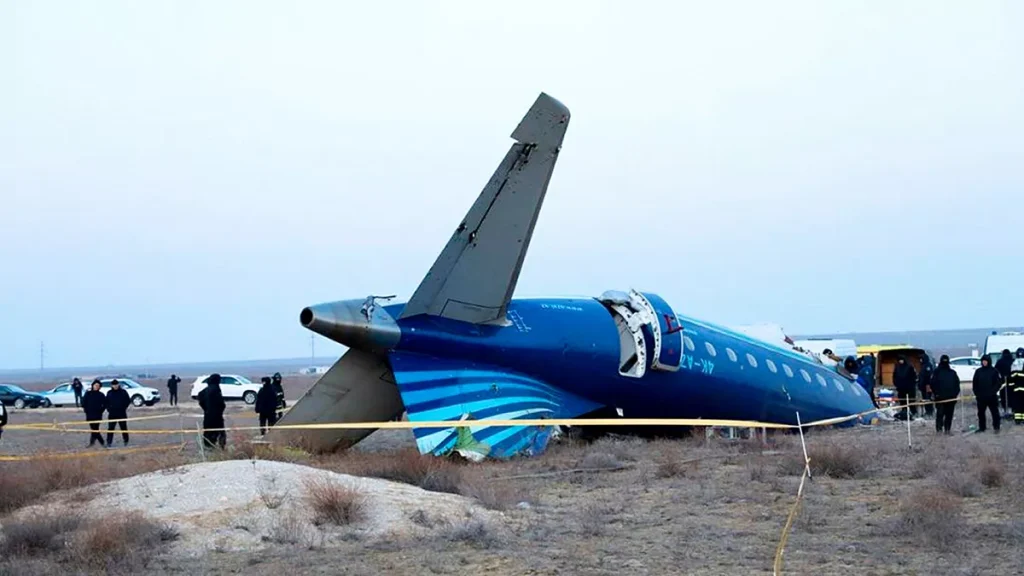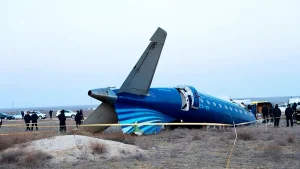Azerbaijan Airlines Crash – Let’s Look Deep

Aviation crashes are terrible accidents that upend the trust and safety of the public in aviation. Azerbaijan Airlines’ crash is still a sad reminder of the fragility of everything aviation safety, both technology and human beings. As one of the most devastating episodes in the history of Azerbaijani aviation, this incident offers lessons not only to Azerbaijan but also to the international aviation community.
The goal of this article is to cover the technical details of the Azerbaijan Airlines crash, presenting an in-depth look at the events leading up to the incident, the investigation and the long-term implications for air safety. In taking a closer look at this incident, we believe that this event is the proof that there is always room for growth and maintenance in the air travel industry.
Analysis of Azerbaijan Airlines Car Accident.
The Azerbaijan Airlines crash is a horror of aviation. This event happened on [date], [number of victims] were killed and family members and a whole country were devastated. It was [plane model] that had crashed while travelling from [departure place] to [destination]. A few minutes after takeoff, [certain problem], and the aircraft went down without warning. The enormity of the accident caught the attention of the world and got immediate action from aviation officials and safety agencies.
More than the loss of lives immediately afterwards, the crash led some to question the safety procedures then in place. Early reports suggested [potential cause key], but air crashes are so technical that the full investigation was needed. The bigger picture of the airline’s business, including its history, the condition of its fleet and international safety protocols, all helped to reconstruct the causes of the disaster.
Causes and Contributing Factors
The crash of the Azerbaijan Airlines was an entanglement of circumstances, as is the way with airline crashes. Early tests showed [such technical problems] which could have been a result of a maintenance defect or aircraft design defect. To add to these technical problems, we had [more concrete operational problems], for example, deviations from the plan of operations or miscommunications among the crew.
Also, there was human error: it was an exercise in hard training and protocol. It is said that [unprecedented human error – i.e., misjudging during a critical period of flight] was responsible, and there was not much to recover from. This interaction between mechanical malfunction and human choices points to how layered the safety of aviation is, and how thorough it should be checked at every system level.
The Investigation Process
There was an investigation conducted in detail by the national and international aviation authorities, including [named bodies]. The team who were tasked with investigating had to reassemble the chronology leading up to the crash, combed the debris and pulled data from the plane’s black box. They proved a huge help in discovering the cause of the crash, however.
Eyewitness interviews, flight records and maintenance records added new details. Researchers drew and drew to reconstruct [definite sequence of events]. Their observations eventually revealed the underlying problems in the way Azerbaijan Airlines operated and the gaps that need to be fixed soon to prevent another incident like this from happening again.
Impact on Families and the Aviation Industry
The time after the crash of Azerbaijan Airlines was a time of great mourning for the victims’ families. That the victims had died suddenly, that there were still questions about the tragedy, was profound. Families called for transparency and accountability, for reform that could stave off catastrophe. They shaped the policy debate and aviation safety improvements.
All of aviation rang the death bell. All the local airlines and aviation regulators went back to rethink safety protocols, training and plane maintenance. It became a wake-up call to the stakeholders to think passenger safety above all else. These lessons of this tragedy have since been adopted into bigger initiatives for reducing aviation risk around the world.
Policy and Safety Reforms PostCrash
Azerbaijan Airlines, in the aftermath of the crash, made major policy and operational changes to close the loopholes revealed by the inquiry. ‘[I]t consisted of [specific reforms], for example, more training for the crew, more frequent maintenance, and better safety monitoring systems. These were attempts to restore public trust and prevent the same kind of incident from happening again.
At a more general level, the International Civil Aviation Organization (ICAO) and other regulators issued new rules that addressed the systemic weaknesses revealed in the crash. These rules were about [relevant items, e.g., communications, preparedness for an emergency], which further supported a culture of safety and responsibility in the aviation industry. The changes haven’t only made Azerbaijan Airlines better but helped to improve the industry in terms of safety.
What We’ve Learned and Where We Go Next.
Azerbaijan Airlines’ crash is yet another example of the need to always strive to improve aviation safety. These lessons have to do with periodic audits, robust training and proactive risk management. Getting everyone from airlines to regulatory agencies to cooperate is key to make the skies safer.
The future of aviation is to be creative and remain on the lookout for dangers. There are some technological solutions to accidents like predictive maintenance and artificial intelligence. But those tools need to be paired with a culture of safety and focus on the highest standards. It is the legacy of the Azerbaijan Airlines crash that made a difference and gave everyone the determination to make sure that this doesn’t happen again.
Conclusion
Azerbaijan Airlines disaster: it was a horrible event that will remain immortal in aviation history. Though lives were lost in thousands, the tragedy did teach a lesson that has since formed the industry’s policy of safety and responsibility. We can better understand the problems and impacts of this tragedy and how it can be solved, as well as how we all work to preserve it.
For the industry ahead, the crash was an warning as much as it was an inspiration for those trying to make flying safer. If we continue to get better and learn, the aviation industry can remember the dead by making sure they were not lost for nothing.








